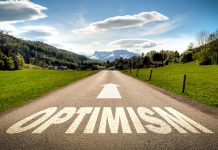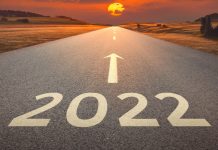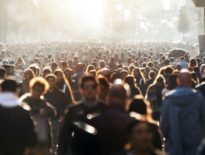Discussions about the reasonable number of deaths in a pandemic, about whether or not the price for saving people is killing the economy and, ultimately, debates on a life’s value were brought to the fore by the COVID-19 pandemic.
The hardest challenge leaders have faced in recent months has been finding a balance between saving citizens’ lives and saving jobs. The dilemma was summed up very clearly by Anthony Fauci, director of the National Institute of Allergy and Infectious Diseases in the United States, who said that the US government must answer the question: “How much suffering are you willing to accept to get back to what you want to be?”
What to save first: people or the economy?
Reopening the economy is a priority, president Trump said last month, stressing that this is probably the most important decision of his life.
“I’m not saying that everything is perfect. Will some people be affected badly? Yes”, Trump said on Tuesday. “But we have to get our country open, and we have to get it open soon”, the US president reiterated his position in early May.
In the United States, the tension between saving the economy and protecting public health reveals a rift between the political left and right, as journalist Quentin Fottrell points out in a comprehensive analysis: while right-wing politicians believe a robust economic system initiates strong social structures for all citizens, left-wing politicians believe, on the contrary, that it is the strong social structures that build strong economies.
Although we are oscillating between saving people’s lives and maintaining the economy’s good health, this is a false dichotomy, because we understand too little of what the impact of a severe [economic] depression would be on human life, says George Loewenstein, a professor of economics and psychology at Carnegie Mellon University. In fact, the economy influences mortality, but in the midst of the pandemic we focus more on identifiable victims and ignore the future number of victims that the economic crisis will cause, Loewenstein explains.
“If it’s public health versus the economy, the only choice is public health. You cannot put a value on human life”, said Andrew Cuomo, the governor of New York.
Statistics indicate that the elderly are among the most vulnerable to COVID-19 and the pushing for an early recovery of the economy at the cost of these lives shows that the economic contribution of a person are a major criterion on which society determines the value of a person, neurologist Paul Zak notes, admitting that, whatever choice we make, someone will be affected.
Two weeks ago, Cuomo told reporters that there are costs to keeping the economy on hold, just as there are costs to reopening it, but that he will not choose between dollars and people’s lives. “The question is: how much is a human life worth? What the government does today will literally determine how many people live and how many die”, Cuomo said, stressing that people are not things that can be replaced or recovered.
The worth of a human life depends on the country
As cynical as it may seem, there is such a thing as an indicator of how much a human life is worth in different parts of the world. This indicator is used by economists, companies and governments to calculate the risks of a trade or to decide whether a particular measure is worth implementing, depending on the number of lives it could save.
In the US, a life is worth about 10 million dollars; in Canada, 9.6 million; in the UK the price drops to 7.4 million; and in Romania, just 1.6 million dollars.
These amounts represent the economic loss a given country suffers when the average citizen dies.
Since 1928, several measures have been taken in different fields (insurance, health, economy, environment, labour protection, etc.) based on this indicator.
In 1982, the issue of the value of human life reached president Reagan’s office, during a fierce debate between various government departments who were unable to decide whether a regulation on the handling of hazardous chemicals in the workplace would be worth it financially. On the one hand, the measures would have not only saved working days lost due to accidents, but they would have also saved lives. On the other hand, though, companies would have needed to spend millions of dollars implementing this regulation.
Kip Viscusi, a professor of law, economics and management at Vanderbilt University, who worked both for the Carter and the Reagan administration, was called to settle the dispute. In his research, Viscusi used the indicator of the statistical value of life, taken from the economist Tom Schelling.
While studying people with high-risk jobs, the professor found that considering today’s value of money, workers in hazardous environments earned $ 1,000 a year more, as they were rewarded for taking on a one-in-10,000 risk of dying on the job due to their working conditions.
If one death occurs for every 10,000 workers, and each of the 10,000 workers receives an additional $1,000 to take on the risk of dying, it means the total amount the company pays its workers for the death of one is 10 million dollars. That is the value, in dollars, of a human life.
Even the World Health Organization has a formula for governments to help them decide which medical treatments are cost-effective and which are not. Thus, the WHO suggests paying for treatments that cost no more than three times the GDP per capita for each year of good health the treatments provide. For instance, in the United States where GDP per capita is about $65,000, a treatment that costs less than $195,000 for one year of good health would be considered cost-effective. A treatment that costs less than one times the national annual GDP per capita is considered highly cost effective, writes The New York Times.
Despite sounding like a spot of gallows humor, the numbers are no joke, The Guardian wrote in 2008, while analysing the Environmental Protection Agency’s (EPA) decision to lower the value of human life by nearly $1 million (from $7.8 million to $6.9 million) under the administration of president George Bush. “The less a life is worth to the government, the less the need for a regulation—such as the tighter restrictions on pollution that the EPA refused to impose today, effectively postponing any action on climate change”, writes the paper. Thus, if a hypothetical regulation would cost the state or a company 18 million dollars, and it prevents 2,500 deaths, the benefits are greater than the costs, if the value of a human life is estimated at $7.8 million. But if a life is valued at $6.9 million, then the set of regulations costs more than the lives it saves, so it will not be adopted.
Numbers cannot define a life
To commemorate people who died of COVID-19 in the United States, The New York Times replaced the front-page pictures and articles of one Sunday’s newspaper with a list of nearly 1,000 names, marking the country’s approach to the “macabre milestone” of 100,000 deaths (since then, deaths have exceeded 100,000). The list was compiled by a team of researchers who searched for death announcements and obituaries online.
The newspaper emphasises, right from the title of the article, that “they were not simply names on a list. They were us”. That is why the newspaper made up a list of names and snippets from the lives of the demised, to give a sense of the “uniqueness of each life”.
Tom Bodkin, the newspaper’s creative director, said he did not remember any other edition of the newspaper that had had a front page without any images in the last 40 years, and that this was “certainly a first in modern times”.
“A number is an imperfect measure when applied to the human condition. A number provides an answer to how many, but it can never convey the individual arcs of life, the 100,000 ways of greeting the morning and saying good night”, The New York Times wrote.
Shattering of a myth
Probably of all the opinions that have been circulating lately, the most ruthless is the one stating that the virus only kills those who already have one foot in the grave.
This idea is not supported by the available data. On the contrary, between March and May 2020, Spain recorded 43,000 more deaths than in a normal year (a 55% higher mortality rate), according to the Ministry of Health in Madrid. Of these 43,000 deaths, 27,118 deaths were linked directly to COVID-19.
An analysis by The Financial Times, which compares the number of deaths of any other cause in March-April 2020 with the number recorded in the same months between 2015 and 2019, shows that deaths increased by 60% in Belgium, by 51% in Spain, by 42% in the Netherlands and 34% in France. Some of these deaths may be the result of causes other than COVID-19, but mortality has risen steeply in areas suffering the worst outbreaks of coronavirus, suggesting that most deaths are related to the virus rather than to the side effects of the lockdowns, the authors note. The statistics focusing on different regions revealed even more concerning increases: the region around the Italian city of Bergamo recorded a 464% increase in mortality compared to the usual average, and in Madrid the mortality was 164% higher.
The US could have prevented more than half of the number of deaths and infections with COVID-19 if it had implemented social distancing policies a week earlier. The number of infections would have been 82% lower and the number of deaths 84% lower if the restrictions had been imposed two weeks earlier, according to a recent study by researchers at Columbia University in New York. Nevertheless, this study has not been verified by other experts, and the authors say that while early intervention in a pandemic is essential, it is impossible to predict with any precision how the population would respond to these restrictions. An analysis by The New York Times reveals that, according to data from the National Center for Health Statistics and the Center for Disease Control and Prevention, New York City recorded a 600% higher mortality rate between March and April 2020 than usual.
For some, thousands and hundreds of thousands of deaths are simple numbers, faces without names and identities, people with a foot already in the grave, who would not have lived too long anyway.
But for their loved ones, they were people that no one and nothing will replace—Patricia Dowd, 57, a Silicon Valley auditor; Kious Kelly, 48, one of the nurses who fought COVID-19; Roma Cohn, 91, who rescued 56 Jewish families from the Gestapo; Louvenia Henderson, 44, single mother, proud of her three children; Marion Krueger, 85, an extraordinary grandmother, always with a smile on her face; Carl Redd, 62, a grandfather who always found time for his only grandson. And the list goes on, on the front page of The New York Times, as well as on other written and unwritten lists all over the world.
In this unexplored, confusing jungle that the pandemic has laid before us, every day that we decide to follow the protective measures against a virus that has made our planet mourn is a day we choose not to kneel before fear, nor to selfishly cling to life. It is a day when we understand that one life encapsulates the entire value of the world, and we decide to protect it wherever we meet it.
Carmen Lăiu is a writer for ST Network and Semnele timpului.



















